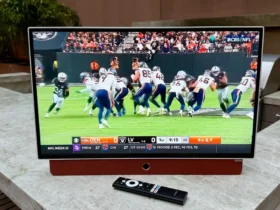Testing mobile applications on real devices remains the most reliable way to catch bugs before they reach users. I’ve spent years testing apps across different platforms. This guide shares practical strategies to speed up your bug detection using real devices. You’ll learn how to leverage mobile app automation testing tools and optimize your testing workflow. We’ll explore efficient ways to combine local testing with cloud-based mobile testing solutions to maximize coverage while minimizing time spent.
Finding the Right Testing Mix
Local device testing puts real hardware in your hands. This direct connection reveals issues that simulators often mask. Users tap touch targets differently than automated scripts. They swipe at odd angles. They mash buttons impatiently. Seeing these natural behaviors exposes UX problems fast. Screen sensitivity issues jump out immediately. Touch target sizes that seemed fine in simulation suddenly feel cramped. Gesture conflicts become apparent. Even subtle animation glitches catch your eye.
Mobile app automation testing tools step in for the boring stuff. Let them handle endless login attempts and form submissions. Tools like Appium shine at repetitive verification. They’ll check every text field validation twenty times without complaining. Run the same purchase flow across ten Android versions. Verify layouts on different screen sizes. All while you focus on deeper testing.
Battery impact stands out on physical devices. Background processes drain power differently than in simulated environments. Memory leaks surface faster. Network timeouts feel more realistic. Location services behave unpredictably (just like in real life). The camera might stutter. Push notifications arrive at odd times. These real-world quirks expose bugs that testing can sometimes miss.
Mix manual and automated approaches thoughtfully. Let each method play to its strengths. Automation handles the predictable paths. Your hands-on testing explores the weird edge cases that only humans think to try.
The Power of Cloud Testing
Cloud-based mobile testing transforms device access limitations into opportunities. Picture running tests on the latest iPhone in London while checking an old Samsung model in Singapore. These platforms maintain vast device farms across global locations. You tap into them instantly – no shipping or setup required.
Testing gets democratic. Small teams access the same device coverage as major corporations. That obscure Android tablet from 2019? It’s available. The latest foldable phone? Ready for testing. Regional device variants? All there. Geographic restrictions vanish. You can verify your app works in markets you’ve never visited.
Cost efficiency shines through. Maintaining physical devices drains resources fast. They need storage space charging stations repairs and constant updates. Cloud platforms handle all that overhead. They keep devices updated patched and ready to go. You pay for what you use nothing more.
Time zones become your ally. Run automated tests overnight on devices worldwide. Wake up to comprehensive results. Spot compatibility issues early. Fix them before users notice. Cloud-based mobile testing also enables parallel testing at scale. Run the same test on fifty devices simultaneously. What took days now takes hours.
But choose your cloud based app testing platform wisely. Network stability matters. Good tech support proves essential. Clear pricing prevents surprise bills. The right platform feels like an extension of your local testing setup – just bigger better and always available.
Smart Device Selection
Pick devices based on your user analytics. Focus on popular models first. Include devices with different:
- Screen sizes
- OS versions
- Hardware capabilities
- Memory configurations
This targeted approach catches common issues faster than random testing.
Test Case Prioritization
Start with critical user paths. Login flows. Payment processing. Data synchronization. These features need rock-solid reliability. Build automated test suites around them first.
Edge cases deserve special attention. Poor network conditions. Low storage space. Background app refresh. Real devices expose these issues clearly.
Performance Monitoring
Watch for:
- App launch times
- Screen transition delays
- Memory usage patterns
- Battery consumption
- Network request timing
Real devices give accurate performance metrics. Simulators often miss subtle issues.
Security Testing on Real Devices
Physical devices reveal platform-specific security gaps. Test biometric authentication thoroughly. Verify secure storage implementation. Check SSL certificate handling.
Debug access needs extra care on real devices. Production builds should block all debug entry points. Test these restrictions systematically.
Automated vs Manual Balance
Combine automated and manual testing effectively. Use automation for:
- Smoke tests
- Regression checks
- Performance benchmarks
- Basic functionality validation
Save manual testing for:
- New features
- Complex user interactions
- Exploratory testing
- Bug reproduction
Documentation Best Practices
Keep detailed test records. Note device details for each bug:
- Model name
- OS version
- App version
- Steps to reproduce
- Expected vs actual behavior
Good documentation speeds up bug fixes. It prevents duplicate issue reports.
Optimization Tips
Group similar test cases. Run them in parallel when possible. This saves time without losing coverage. Schedule automated tests during off-hours.
Use screen recording selectively. It helps reproduce complex bugs. But constant recording slows down testing. Strike a balance based on your needs.
Building Your Device Lab
Start small. Add devices gradually. Consider factors like:
- Market share
- Screen size variety
- OS version mix
- Budget constraints
A well-planned device lab pays off through faster bug detection.
Remote Team Coordination
Share devices efficiently across teams. Set clear device access schedules. Use remote device management tools. This maximizes device utilization.
Keep communication channels open. Quick bug reports help developers fix issues faster. Regular sync-ups prevent duplicate testing efforts.
Future-Proofing Your Strategy
Stay updated with new device releases. Plan for OS updates. Keep your testing tools current. This prevents sudden compatibility issues.
Review and adjust your device mix quarterly. Add or remove devices based on market trends and user data. This keeps your testing relevant.
Conclusion
Real device testing stands out as your best defense against sneaky bugs. Every tap swipe and gesture on physical hardware reveals potential issues. The right mix of mobile app automation testing tools and cloud-based mobile testing amplifies your testing efficiency.
Success lies in smart execution. Pick your devices strategically. Automate the repetitive stuff. Save your energy for exploratory testing where human insight matters most. Keep your test cases current and your documentation clear.
Your testing process should evolve with your app. Listen to user feedback. Track bug patterns. Adjust your strategy when needed. The reward? Happier users stronger app ratings and a reputation for reliability. That’s worth every minute spent testing on real devices.














Leave a Reply